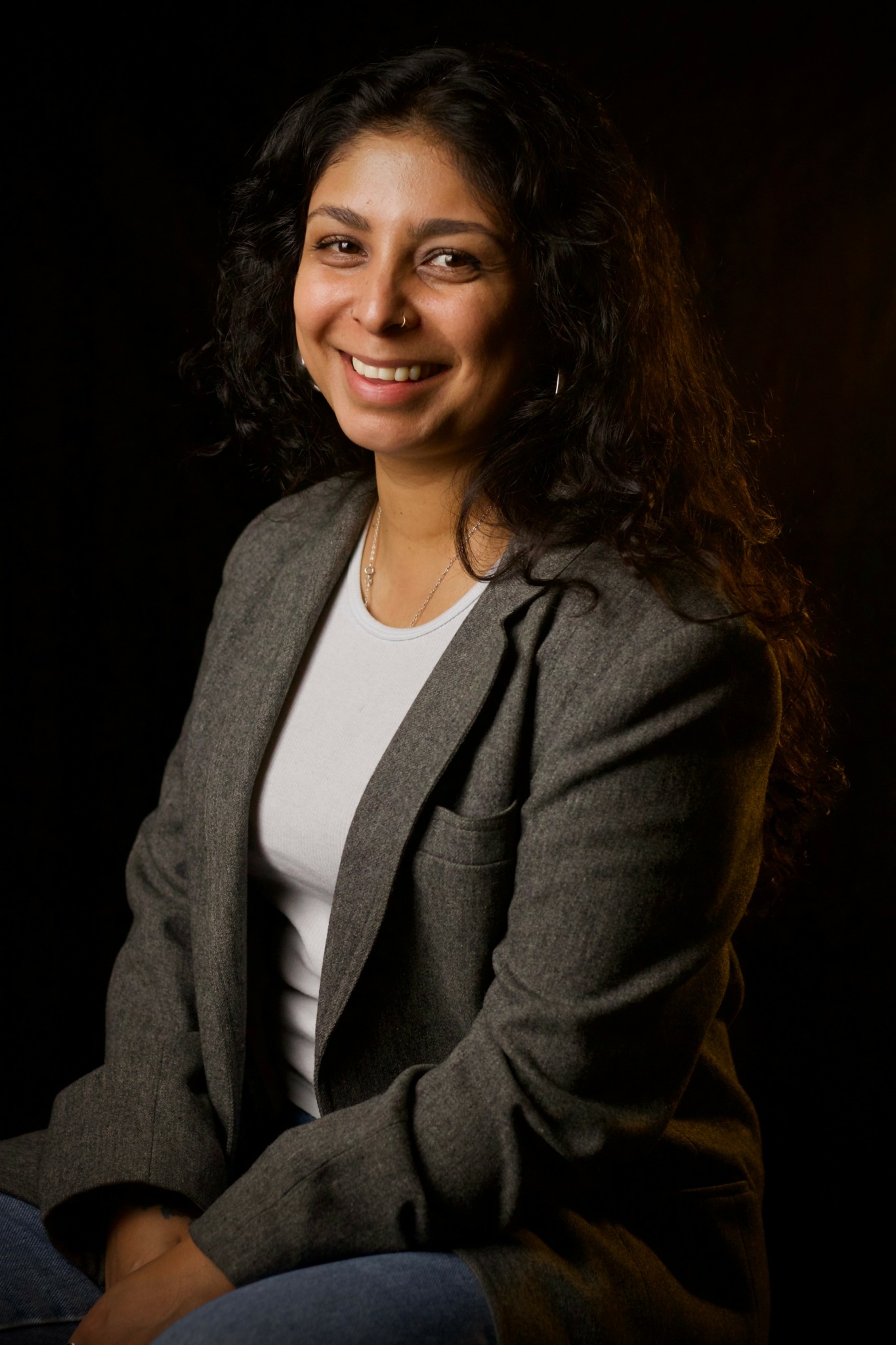We were lucky to catch up with Amaris Pueyes Méndez recently and have shared our conversation below.
Amaris, thanks for joining us, excited to have you contributing your stories and insights. Can you talk to us about a project that’s meant a lot to you?
About a year ago, while finishing my film & TV production degree at USC’s School of Cinematic Arts, I submitted to USC’s advanced project class called CTPR-480. I hadn’t originally planned on taking this course since I had already fulfilled my advanced project requirement as an Executive Producer on a TV thesis series class. But during a class break, my best friend—and an incredible producer—Ana Flavia Veiga planted the idea in my head.
I wasn’t necessarily planning on staying an extra semester, especially since getting the opportunity to direct a project in CTPR-480 was highly competitive. In this class, students apply for their desired roles, and only ten are shortlisted for directing. Each director must then pair up with a producer—who also undergoes a shortlisting process—and together, they must find a project they believe in and pitch it to a panel of faculty members and student advisors. Out of all the pitches, only four projects get greenlit and funded.
The odds of Ana and me both making it through and finding a project that aligned with our interests were uncertain—but we pulled it off.
Once we got past the application process, the journey to making our short felt like a thrilling race. In just one semester, we cast, crewed, and completed the film—an incredible experience from start to finish. It was the largest team I’ve ever worked with as a director, with over 30 creative collaborators. The process was challenging, but I loved every step of the way.
Our film, The Custodian, follows Pablo, a desperate custodian at a corrupt boxing gym, who must risk his morals—and his life—to save his beloved grandmother. At its core, the story is about overcoming adversity and the lengths we go to for the ones we love. And, in the end, justice is served to the real villain.
Working on The Custodian with such a special team was truly an honor. Having the opportunity to shape every aspect of our characters’ journey—from script development to the marriage of sound and picture—was a dream come true.
What I love most about directing is the collaborative workflow: getting to create with incredibly talented people and then looking back in awe, realizing that what began as just an idea came to life by bringing a bunch of cool minds together. Each person brought a piece of themselves into the project and that’s the best part about filmmaking.
Another exciting aspect was working with a stunt coordinator for the first time. The Custodian is a boxing film, so we had to carefully choreograph each fight scene, ensuring every movement told a story. Coming from a dance background, I found the process especially thrilling—blocking action sequences felt like choreographing a dance, blending my two passions into one. It definitely sparked my desire to work on more action films in the future.
Rooted in a Latine/x-centered story, we prioritized authenticity in casting. We also assembled a crew that represented a range of experience and identities—from first-time filmmakers to seasoned crew members. In the end, we were proud to build a beautifully diverse team, with most department heads being women and BIPOC creatives, which was all very important to me.
The film marked the culmination of my time at USC, and now that I’ve graduated, it’s just beginning its festival journey. I’m excited to see the path it takes.


Amaris, before we move on to more of these sorts of questions, can you take some time to bring our readers up to speed on you and what you do?
I spent much of my childhood traveling to various countries with my parents, engaging in various community work projects. We volunteered at schools, shelters, orphanages, senior homes, hospitals, and various other organizations. These experiences exposed me to diverse cultures and people, broadening my worldview and sparking my passion for storytelling. Listening to the life stories of those my parents worked with deeply inspired me. It made me curious about how people from completely different sides of the world could share similar experiences. For as long as I can remember, I’ve been fascinated by the complexities of individuality and shared experience—and that curiosity continues to drive me today. Constantly adjusting to new homes (renter life), people, and cultures shaped my journey as an artist.
Although we moved frequently, our home base was always Pichilemu, Chile—a small town three hours south of the capital. It was a town where sports and tourism dominated, making me feel like a bit of a misfit. Artistic opportunities were scarce—and to put things in perspective, the first ballet school didn’t open until 2018. I was one of the first to sign up as an adult. My main training in performing arts came through holy YouTube and church. I sang in the choir and participated in any dance, song, or art-related event I could find.
Despite the limited resources, I created my own version of an art training program. I spent countless hours writing, singing, and choreographing in my bedroom. Once friends and teachers saw me as the “artsy” kid, they started inviting me to choreograph dances, put together skits, and contribute to just about every artistic event or competition.
My only connection to film was through my aunt Vivis–she’s an incredible actress. I remember visiting the U.S. and being blown away by the infinite opportunities. Watching my aunt perform in films and theater sparked my interest in storytelling through this medium.
When I moved to the U.S. to officially pursue a career, I had no idea I would end up in film. The idea felt too far out of reach, given how scrappy my performing arts experience had been. As soon as I arrived, I enrolled in the first community college I could find, starting my studies at Cabrillo College in 2020. There, I had the chance to learn more about theatre and dance at a college level, which was a dream come true. As I neared the end of my time there, I decided to apply to film school, taking a chance on myself and pursuing a new path alongside other theater arts majors.
Receiving my acceptance letter from USC’s School of Cinematic Arts felt surreal—terrifying in the best possible way, as I knew nothing about filmmaking at the time. Now, having graduated from film school, I can confidently say filmmaking was the best choice I could have made for my career. It’s a hybrid medium where you can combine all forms of art, offering endless ways to tell stories.
But above all creative process, what excites me most about filmmaking is the collaborative journey. Bringing together diverse creative departments and merging artistic visions and voices into one cohesive whole is incredibly inspiring. Collaboration is essential to me because each voice and perspective uniquely shapes the storytelling process. This dynamic is what fuels my drive as a writer-director and inspires my continued creative growth.


Is there a particular goal or mission driving your creative journey?
I’ve always been drawn to the gray areas in life—the taboo subjects people shy away from because they make us uncomfortable. These are exactly the conversations I’m most excited to have. Not just for the sake of drama, but because of how I was raised. I grew up in a deeply religious household—not just Sunday church, but full-on missionary kid (army brat lifestyle). Everything was framed in black and white, good and evil. Biblical dogmas, mystery, secrets, and the pursuit of holiness shaped the world around me.
Maybe that’s why I’ve always gravitated toward antiheroes and underdog stories—characters who live in the in-between, who fall and get back up, or don’t. I spent so much of my early life shielded from other truths and perspectives that now, as an artist, all I want to do is explore them. Sorry mom and dad!
As a Latina woman, my mission is to tell stories from a personal perspective, rooted in the communities I come from. Most of the people who raised me, shaped me, and continue to surround me are latine/x, so it only makes sense that I continue to represent us in my work. I care deeply about telling stories truthfully—in a way that honors the complexity and richness of people’s lived experiences.
Now that I’ve completed my film education, I’m ready to return to my roots—to that scrappy, raw, intuitive art-making that made me fall in love with storytelling in the first place. I want to mix mediums again, experiment, and make work that moves me. Work that I would actually want to watch.
Film school was awesome, don’t get me wrong, but it’s full of voices—opinions on how your work should be. It’s easy for projects to become more about meeting expectations than expressing something personal. This year, I want to create from a place that’s internal and self-fulfilling, not driven by profit or external validation. Now that I’ve transitioned from learning the “industry standard” structure of film school to the freedom (and uncertainty) of being a freelance artist, I feel the need to slow down and reconnect with my own voice. I want to give myself the space to rediscover, refine, and allow my creative identity to evolve.


Let’s talk about resilience next – do you have a story you can share with us?
I finally carved out the opportunity to pursue what I truly wanted at 24. And while I’m great at beating myself up for “starting late,” I know that it gave me the drive to work harder, achieve more, and let go of the fear of failure. I entered college as what’s often called a non-traditional student—meaning I began my studies later in life. I had moved from Pichilemu, Chile, to start over and finally chase my artistic dreams, even though I knew absolutely nothing about how movies were made.
I enrolled in the first local school I found and had to learn how to navigate the U.S. education system—all in my second language, English. After about a year and some change at Cabrillo College, a community college in Santa Cruz (most of which I completed remotely due to COVID), I made the move to Los Angeles and transferred to a private university to pursue film more seriously.
When I first transferred to USC’s School of Cinematic Arts in 2022, I felt completely lost and behind. I didn’t even know that screenwriting software like Final Draft existed. Surrounded by younger students who already spoke the language of film so fluently, I often felt out of place and self-conscious. So when I was selected to serve as Executive Producer on a thesis TV series—and then, the following semester, chosen to direct one of the four advanced narrative thesis projects—I felt deeply honored.
Looking back on everything I had to overcome to get there, it’s clear that the only way forward was to give it my all, even when I felt like I was playing catchup. If I was behind, that just meant I had to work harder, continue to grow, and keep moving forward.
Contact Info:
- Instagram: amaforshort


Image Credits
Liam Hoole
The Custodian BTS


